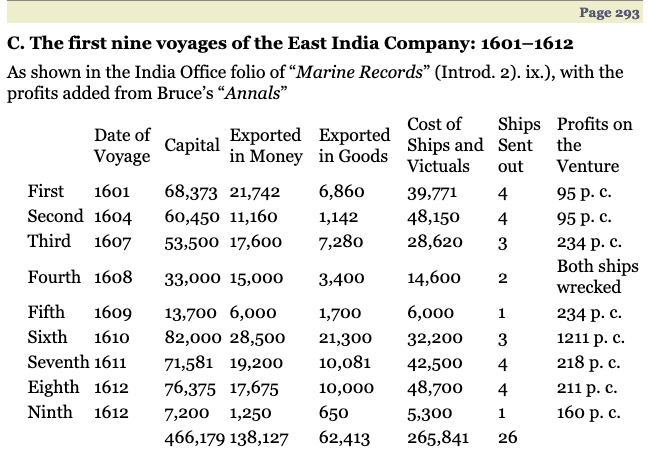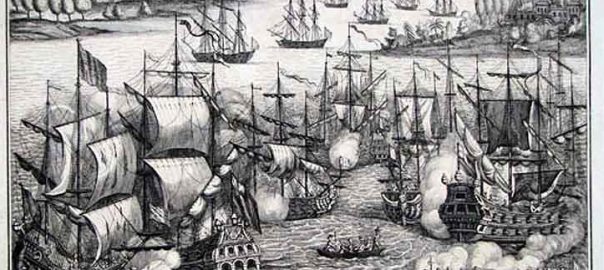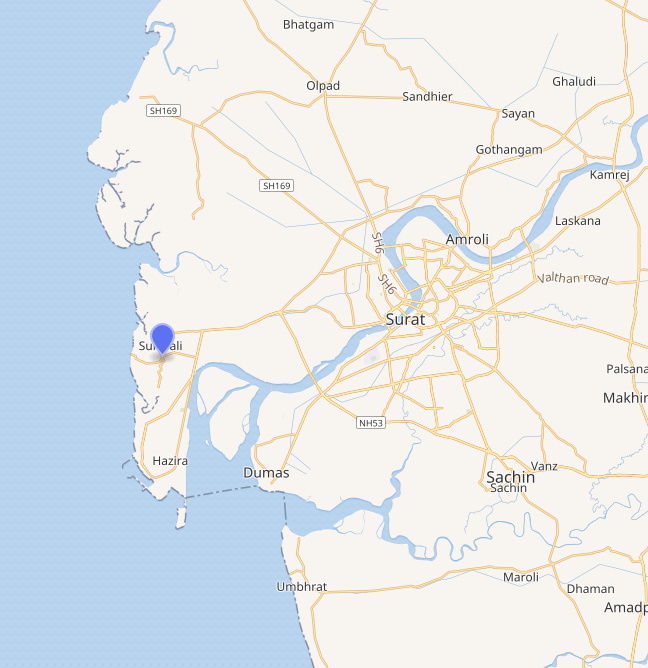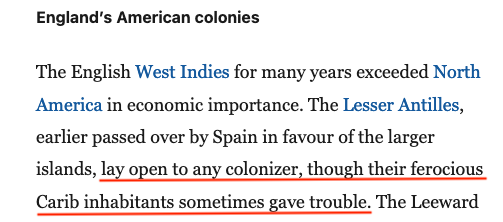1612 CE was an inflection point in the 500-year-long story of the emergence and maintenance of “Western” domination of the world. I am going to tell this story mainly by using the latest useful online source I have discovered, Sir William Wilson Hunter’s The European Struggle for Indian Supremacy in the Seventeenth Century (ESIS), which was first published in 1907 as Volume 7 of the 9-volume History of India edited by Columbia University prof A.V. Williams Jackson.
Before we go to Surat, though, I need to note another very significant event of 1612, namely the conclusion of the Treaty of Nasuh Pasha between the Ottoman and Safavid empires. In it the Safavids regained all the territories in the Caucasus, etc, that the Ottomans had captured in the 1580s and that Safavid Shah Abbas I had, as one of his first acts of Shahdom, ceded to the Ottomans in the 1590 Treaty of Constantinople.
In yesterday’s post here, I had already surveyed some of the steps by which Abbas had been regaining power.
English-WP lists the terms of the 1612 treaty as follows:
- The Ottoman Empire agreed to return all territory gained by the treaty of Constantinople of 1590.
- The border line became the line drawn in the Peace of Amasya in 1555.
- In turn Persia agreed to pay an annual tribute of 200 loads (59000 kilograms) of silk.
- The route of Persian pilgrims to Haj was changed (over Syria instead of Iraq).
English-WP also says the Safavids never actually paid the stipulated tribute.
Nasuh Pasha was the Grand Vizier in Istanbul. How humiliating to be the eponym for a treaty so humiliating to Ottoman interests and prestige! He didn’t last long: he was executed by Sultan Ahmed I in 1614.
Clearly 1612 was a bad year for the Ottomans. They also lost a sea-battle to a Sicilian-Neapolitan fleet near Tunis.
But a broader point here is that both these empires (like so many that would soon fall to Western control or hegemony) were fundamentally land-based, with only a small presence at sea… whereas the balance of power in the early 17th century was shifting rapidly and significantly toward powers that could wield– and project– huge power at sea.
Which is how we can have such a notable headline as the following. “England beats Portugal in India.” What the–?? It makes it sound like some World Cup soccer match. But this contest was in a completely different league.
England beats Portugal in Surat, India
This was a historic sea-battle between armed merchant ships of the two European powers, that was conducted at Swally (also Suvali), which is located on a large sandbar out in the Arabian Sea, some 16 miles downriver of the center of Surat, the Mughal Empire’s major port for seaborne trade, pilgrimages, and so on. And I guess in the headline, I’ve already previewed the outcome. Oh well.
The big geopolitical backstory was that, ever since its navigators rounded the Cape of Good Hope in the late 15th century, Portugal had (by force of arms as well as maritime skill) grown into a sizeable presence on the maritime trade routes that had long laced together the shores and islands of the Indian Ocean and its surrounds. But toward the end of the 16th century, small expeditions sent out from coastal trading cities in England and the independently emerging Netherlands (also a Protestant power) had made episodic forays into this area. Then in 1600, England’s Queen Elizabeth chartered the English East India Company (EIC) and two years later the Staadtholder of the Netherlands (sort of a president) chartered its much more powerful and better financed Dutch counterpart, the VOC. Meantime, Portugal had become merged into the Iberian Union with Spain…
Both the EIC and the VOC were expressly designed to challenge the near-monopoly that Portugal’s armed traders had long enjoyed over trade between the very sophisticated and productive economies of Asia and the relatively backward, underdeveloped economies of Western Europe. This opposition to Portugal/Spain was partly religious, partly based on an intra-European realpolitik, and strongly based on the prospects of profit for the many private and monarchical investors in the companies.
The facts that England signed a treaty with Spain in 1604 that brought an end to many decades of Anglo-Spanish conflict, and that in 1609 Spain and Netherlands entered a 12-year truce in the conflict that had long plagued their relationship, are also relevant.
Now, let me have the early-20th century English historian William Wilson Hunter tell the fuller story of what happened at Swally/Surat. The excerpts below all come from Chapter 1 of ESIS.

WWH notes (pp.18-19) that the EIC had originally sought to challenge the Portuguese in their super-profitable stronghold in the “Spice Islands”– roughly, today’s Indonesia and Malaysia. But that proved hard to do, not least because the better-funded Dutch had gotten there first. So the EIC sort of retreated from the Spice Islands toward dealing with traders and ports in India. In 1609, as we saw, EIC captain William Hawkins, having landed at Surat, was allowed to go to the Mughals’ distant capital at Agra and was essentially kept there by Emperor Jahangir until he was finally able to return to Surat in early 1612. (Jahangir was definitely interested in stirring up conflicts between the Portuguese and these strange new arrivals, the English.)
WWH gives a slightly different explanation for what happened. He tells us (ESIS, pp.19-20) that Hawkins had obtained Jahangir’s permission to establish a “factory” (that is, warehouse) at Surat. “But in spite of Hawkins giving a pledge of loyalty to the emperor by marrying ‘a white mayden out of his palace,’ the Portuguese succeeded in getting the grant revoked, and Hawkins, after two and a half years of fruitless negotiation at the court of Agra, left in disgust.”
(WWH also tells us along the way that in 1610 or 1611 the commander of EIC’s ‘Sixth Voyage’, Henry Middleton, got into a bad fight with the Ottoman Governor of Mocha, in Yemen– and, p.20, that that had, “placed us in an awkward position with the Mughal emperor.”)
WWH writes this (pp.25-26):
Wherever the English had gone they had encountered the hostility of the Portuguese. It was not alone in the Moluccas and Philippines, where Portugal had rights based on actual possession of certain of the islands. But in the great empires of India and Japan also, where all Europeans were but humble strangers, the Portuguese determined that for the English there should be no thoroughfare…
Fortunately the Portuguese themselves brought about a collision. Their fleet had prevented our ships from landing at Surat in 1611, and had compelled them to do what business they could by exchanging cargoes at sea. In 1612 Captain Thomas Best, with the Red Dragon and a smaller vessel, the Hosiander, arrived off Suwali, at the mouth of the Surat or Tapti River, with orders from the Company to conciliate the goodwill of the Indian emperor for trade on that coast. On November 29th four Portuguese ships, mounting over 120 guns, attended by twenty-six or thirty “frigates,” or rowed galleys for boarding, appeared off Suwali, with the intent to capture the two English vessels.
Best saw that the Portuguese admiral and vice-admiral were separated by the tide and shoals from the rest. He promptly bore down on the two great ships in the Red Dragon…
A fierce, three-day sea-battle ensued. Then (p.28), on December 2, “Best sailed twenty miles along the coast, hoping the enemy would follow, but they declined…Best anchored in the neighbouring bay of Moha, whence he aided the Moghul troops in besieging a pirate fort.”
Then, this (pp.28-29):
On December 22d the Portuguese squadron, including the four great galleons, having reinforced itself at Diu, again hove in sight. At daybreak on the 23d Best boldly attacked against overwhelming odds, and kept up the fight till ten or eleven o’clock, or, as some say, till two in the afternoon. The Indian soldiers crowded down to the beach to watch our two ships battling with a whole armada. The fight ended in the complete rout of the enemy, and Best chased the flying squadron for four hours.
It seemed, however, impossible that the enormous force of the Portuguese ships should not in the end prevail. But on December 24 (1612) a final engagement was fought. The Portuguese were decisively put to flight. We were, however, so exhausted that the pursuit could not be pressed, and on the 27th Best’s two ships triumphantly reopened communication with our factors at Surat. During the month’s fighting the enemy lost 160 men according to their own account, or three hundred to five hundred according to English estimates. Best lost only three…
Crucially, that entire sea-battle was fought out in plain sight of the Indian indigenes standing on the shore, watching. This had enormous consequences. WWH, pp.29-30:
This running-fight of a single month broke the reputation which the Portuguese had won in India by the sea achievements of a hundred years. As a land-power they had sunk into insignificance on the establishment of the Moghul Empire in Southern India during the second half of the preceding century. The coast governors of that empire now turned with the tide in favour of the English, and Best found it easy to obtain sanction for a factory at Surat and at three other places around the Gulf of Cambay. By a formal instrument all grievances arising out of Sir Henry Middleton’s reprisals were buried in oblivion; our merchandise was to be subject only to a moderate fixed duty of 3½ per cent.; and in event of the death of the English factors, the Company’s property was to be kept safe by the Indian authorities for delivery to our next fleet. This agreement with the Governor of Surat, in December, 1612, was duly ratified by an imperial Farman, or decree, delivered with Oriental pomp to Captain Best at Suwali in January, 1613.
From this imperial decree our legal settlement on the Indian continent dates. It marks a new departure in the history of the English Company – a new departure which was to end in our withdrawal from the Archipelago and our establishment in India. In the same year (1612–1613) the Company at home developed its system of separate voyages into what was known as the system of Joint Stock. By this change it sought to increase its strength so as to join on more equal terms in the contest of the European nations for the Spice Islands. But in its settlement at Surat it had unconsciously provided a retreat for itself to a wider sphere of action, when worsted in that struggle.
(The banner at the top of this post is a detail from an 18th century engraving of the Battle of Swally.)
A note on sources
William Wilson Hunter was clearly a supporter of, and apologist for, English/British imperialism. But he also seems to have been an honest delver into the extensive records of the EIC. And when he writes about, for example, how the Dutch used a mixture of diplomacy and force to impose their will on the governors of various territories in the Spice Islands, or how the jostling for power among the European empires in Asia worked out in practice, he shares some excellent observations that are worth learning from.
Contrast his writing with, for example, this piece of atrociously jingoistic historiography, at right, that I found in the online Encyclopedia Britannica just yesterday…




